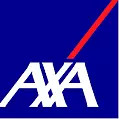Homepage | TECNICHE CHIRURGICHE | Favorable long-term results of endovenous laser ablation
Favorable long-term results of endovenous laser ablation of great and small saphenous vein incompetence with a 1470-nm laser and radial fiber
Patrizia Pavei, MD, Giorgio Spreafico, MD, Enrico Bernardi, MD, PhD, Enzo Giraldi, MD, and Maurizio Ferrini, MD,a Padua, Treviso, and Venice, Italy
Abstract
Objective. Scarce information is available on the long-term results of endovenous laser ablation (EVLA) for great saphenous vein (GSV) or small saphenous vein (SSV) insufficiency. We sought to provide data on the status of patients at least 9 years after EVLA.
Methods. In 2018, we undertook a cross-sectional survey of ambulatory patients who had undergone EVLA in our tertiary care center in 2008-2009. Of 240 eligible patients, 5 died of causes not related to EVLA, 20 refused to participate, and 12 were lost to follow-up. Thus, 203 patients were re-evaluated; of them, 161 (79%) had GSV insufficiency and 42 (21%) had SSV insufficiency. The mean follow-up was 114 months (standard deviation, 11 months). All included patients underwent an echocardiography-color Doppler (ECD) evaluation, a clinical visit, and a standardized medical history. We assessed the competence of the junction and of the treated and untreated saphenous trunk and the presence of recurrent varicose veins. The trunk was considered ablated if it was nonvisible on B-mode or, when visible, if it was noncompressible or without flow or reflux on color flow Doppler analysis. Any recurrent varicose vein with the leakage point located in the treated saphenous vein was considered a failure. We asked patients about the effect of EVLA on their preoperative complaints and about any new or recurrent symptoms. We also recorded any complication or additional subsequent treatment and all data necessary to calculate the clinical class (C of the Clinical, Etiology, Anatomy, and Pathophysiology [CEAP] classification) and the Venous Clinical Severity Score (VCSS). Finally, we investigated potential associations be- tween the study outcomes and variables by multiple logistic regression techniques.
Conclusions EVLA using a 1470-nm diode laser with radial fibers provides stable and valuable long-term results in pa- tients with either GSV or SSV insufficiency. (J Vasc Surg: Venous and Lym Dis 2021;9:352-60.)











